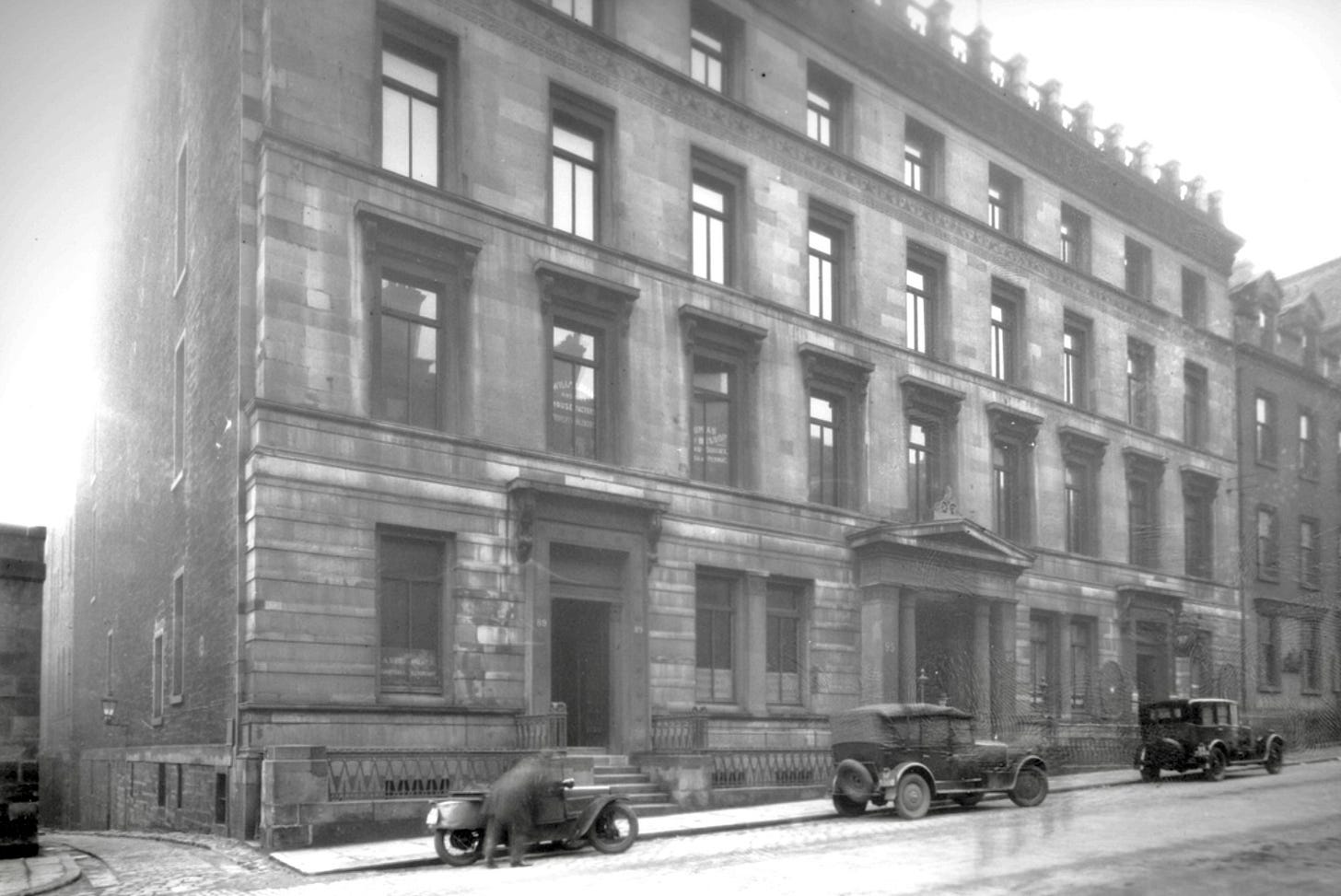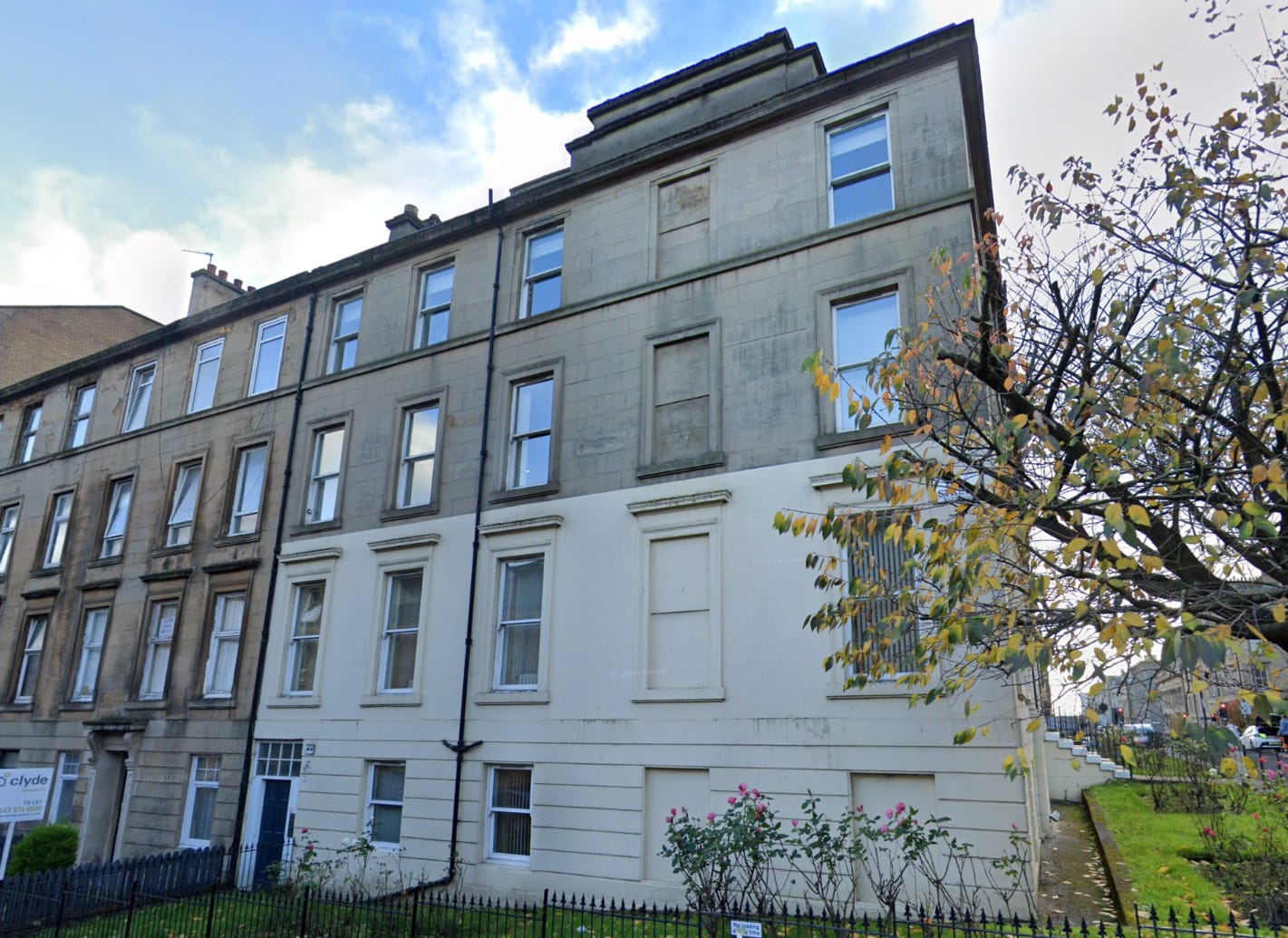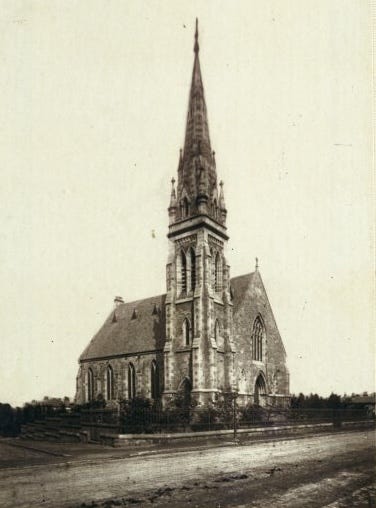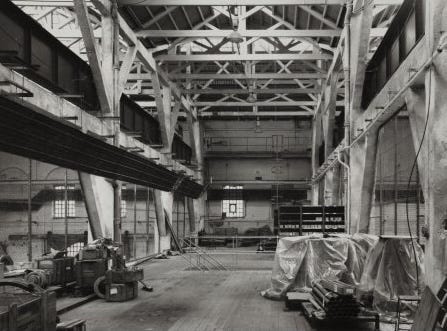In an earlier article on the Architectural Alliance, the name of Angus Kennedy appears as an intended representative of the Glasgow Architectural Society at the 1862 Alliance meeting in London. In the end, neither he, Campbell Douglas nor Alexander Thomson did so, and the first we hear of him again in this regard is in 1868 when he and Thomson did manage to make it down.
Angus was born in Edinburgh in 1809, the son of John Kennedy, a cabinetmaker, and Margaret Campbell. At least one sister is known, Margaret (1810-1863). In 1838, in Tulliallan in Perthshire, he married Isabella Dewar from Glasgow, but by 1841 appears to have been in Glasgow, working as a mason (it is possible his wife and a daughter born earlier that year remained in Perthshire).
By 1851, after the birth of two sons, the family were settled in Glasgow, Kennedy was living at 3 Gloucester Street and working as a ‘Mechanical Draughtsman’, probably employed making detailed scale drawings of machinery or buildings. Within three years, he was a partner in Hoey, Kennedy, & Co., of millwrights and engineers, 56 Cook Street, Tradeston. By now, the family was living at 12 Cumberland Street (his partner, James Hoey, lived at 44 Gloucester Street). The following year, the firm had become Hoey, Kennedy, and McGregor, but McGregor had disappeared a year later, and a year after that, the partnership seems to have ended, with Kennedy working on his own account.
By mid-1858, Kennedy was describing himself as ‘civil engineer and architect’, still living in Cumberland Street but with an office at 21 Renfield Street. By mid-1860, he had moved north of the river to 15 Hill Street, Garnethill (below).
By 1861, Kennedy applied the letters ‘C.E.’ after his name, so presumably had joined the Institution of Civil Engineers, founded in 1818 and which received its Royal Charter a decade later, but he never did so in the Glasgow Post Office Directory. Civil Engineers had obtained a separate professional entry in the Directory since 1859, but nobody else used the suffix in that section up to 1870, only one did so in 1875, and none in 1880.
In 1858, according to the online Dictionary of Scottish Architects, Angus worked with the architect William Spence at the Randolph, Elder & Co.’s engineering works in Tradeston; a decade later he was involved in designing the new engine shed at the Fairfield Works (see below) and at David Rowat's Engineering Works.
In 1861 he was involved in constructing a two-storey workshop in Washington Street, which must have been erected quickly: he advertised his intention to start building in January for occupation by Whitsunday 1861 (that is, mid-May). By June he was promoting feus of land next to the Hyde Park Locomotive Works in Springburn, ‘well suited for Tradesmen’s Houses’, and may have been their architect as well1. The following year he was probably responsible for the specifications of a reservoir at Whitburn with associated trenches and pipeworks2.
In 1862, he is reported as having designed the four-storey Clyde Grain Mills at 14 Commercial Road; they were largely burned out in June 1867, and it isn’t known if they were rebuilt, or if Kennedy was involved. However, three weeks later, some 475 bolls of wheat, Indian corn and oats were being offered in a salvage sale, together with 120 bags of flour3.
There are also two churches associated with him: Ibrox UP Church (below, now the Ibrox Climbing Centre) and Fauldhouse Church, Crofthead, Whitburn, both in 1866, following a manse for Shandon Free Church two years earlier.
One house, Westbourne Villa on Paisley Road, is also associated with him in 1870, together with a building at the corner of Pollokshaws Road and Queen’s Drive of unknown date, which could be either of the tenements below.
At the end of 1861 Kennedy was elected a member of the Council of Management in the Glasgow Architectural Society (Alexander Thomson was elected President)4. The following July he represented the Society at the inaugural meeting of the Architectural Alliance5. In 1863, together with Thomson and Campbell Douglas, Kennedy was down to attend the Alliance’s next meeting, although none attended in the end6. That year, he delivered a paper to the Society on ‘The Construction of Public Works or Buildings to be used for Manufacturing Purposes’7. He continued as a member of the Society’s Council, in 1868 being elected Vice-President8 .
Kennedy had other interests: in 1870, he attended a meeting to incorporate the Glasgow Institute of Fine Arts, founded some nine years earlier (John Mossman was elected to the Council of Management), and also participated in the Glasgow Art Union9.
In mid-1863, Kennedy’s design for the Liverpool Exchange was displayed in an exhibition of entries; other entrants included Messrs Cunningham & Audsley and the Hay brothers, both of Liverpool (Cunningham would be involved in early planning for what became St Andrew’s Halls in Glasgow, the Audsleys would construct Thomsonesque buildings in Liverpool and America, and the Hay brothers would go on to design various Glasgow churches). The competition was won by Thomas Wyatt of London.10
By the mid-1860s Kennedy was busy enough that he advertised for ‘an experienced Architectural Draughtsman, capable of taking charge of the Office. Salary not less than £80 per annum’11. In 1866 he was involved in establishing an appropriate value for land in London Street due to be purchased by the City of Glasgow Union Railway Company, with estimates coming from a number of Glasgow architects, including Alexander Thomson, James Salmon, and Campbell Douglas12. The following year, he and William Leiper were called in over a claim of unpaid funds relating to plasterwork at the new Catholic chapel in Pollokshaws13.
In 1869, Kennedy listed himself as ‘civil engineer, incorporated architect, and valuator, 99 Bath Street’, indicating he had joined the Glasgow Institute of Architects, which had been incorporated in September 1868, but he only used the ‘I.A.’ suffix in the 1870 Directory. His office address was to the west of Thomson’s 87-97 Bath Street office block. It may be the extant building seen in this Mitchell Library image from 1930.

On 21 November 1870, Angus Kennedy attended a meeting of the Glasgow Architectural Society, which had now become a faculty of the Philosophical Society of Glasgow; six days later he was dead, dying in his Bath Street office, the cause being given as ‘Phthisis’, from which he had apparently suffered for some three years.
A major piece of work was the design of the new engine shop for the Fairfield works, described as ‘one of the largest of its kind in the world’, nearly 300 feet square and 50 feet in height, with
three galleries on either side of the main entrance… approached by spacious staircases inside the building. The galleries are supported on strong iron columns and girders, and in the open space between the galleries there are two very heavy travelling cranes, made by Sir William Armstrong14.
From his marriage of more than thirty years before, Angus had two sons, Thomas and James, and three daughters. After his death, the practice continued as ‘Angus Kennedy & Son’, civil engineers and architects, in 1875 at 227 West George Street. The ‘Son’ was presumably the younger, James, who in 1871 described himself in the Census that year as an ‘Architect’, while the elder, Thomas, described himself as a ‘Wright and Joiner’.
In 1863 in Ceylon, Angus’ eldest daughter Mary married James Walker, a civil engineer connected to the Walker brothers whose engineering works provided machinery for some 300 coffee plantations and grew into Walker Sons and Co, one of the earliest corporate giants in the country (One of the brothers, William, may have worked at the trading firm of Wilson, James and Kay in Glasgow at the same time as Alexander Thomson’s elder brother Ebenezer). Mary, who gave birth to at least one child - a daughter - died in Glasgow in 1902, a year before her youngest sister, Isabella, who had married and had four children.
Four years before Angus’ death, in May 1866, Margaret, his second daughter had died at Bath Street, again from phthisis, just under a year after she had married and six weeks after giving birth to a daughter.
What happened to Thomas and James is told in a subsequent Substack entry.
Glasgow Herald, 4 January 1861; 26 Jun 1861
Glasgow Herald, 13 Jun 1862
Manchester Courier, 11 Jun 1867; Glasgow Herald, 3 Jul 1867
Glasgow Saturday Post, 26 Oct 1861
The Dublin Builder, 15 Jul 1862
The Dublin Builder, 15 Jul 1863
Glasgow Morning Journal, 7 Nov 1863
Glasgow Evening Citizen, 25 Apr 1866; North British Daily Mail, 20 Oct 1868
Glasgow Herald, 31 Mar 1870; Glasgow Evening Citizen, 15 Apr 1870
The Dublin Builder, 1 Jul 1863
Glasgow Herald, 10 May 1865
Glasgow Evening Citizen, 25 Apr 1866
Glasgow Free Press, 30 Mar 1867
Liverpool Journal of Commerce, 9 Jul 1872








Hi Dominic, Thanks for giving my ancestor some exposure. I've got a lot of information on the family, and there are some details you haven't quite got right. Angus had a remarkable career progression from being apprenticed to his father John as a cabinetmaker in Nicolson Street in the Old Town to his death in Glasgow due to phlebitis, not pthisis as you report. In fact he just worked himself to death. As a young man he got involved in the Secessionists, which resulted in his meeting Isabella Dewar, daughter of a Glasgow baker, and they were married in the United Secessionist chapel in 1838, not Tulliallan. He turned himself progressively into an industrial designer, patenting an "improvement in milling machines", which I haven't traced, and later describing himself as "Industrial Architect and Civil Engineer". The family kept the house in Elphinstone Street, Kincardine, going until after 1841; Isabella only went back to give birth in safer conditions than Tradeston. He refused to train eldest son Thomas (my great grandfather), who only called himself an architect in the 1871 Census after Angus had died. He completely failed to live up to his father's standards and I guess was pretty alcoholic. He did design, or had some involvement with, the two tenements named Sandringham on the front at Largs and Port Bannatyne. I didn't know about the Ceylon connection, and suspect some details re Isabella are incorrect. I'll get into my records and post re their generation in your later post.